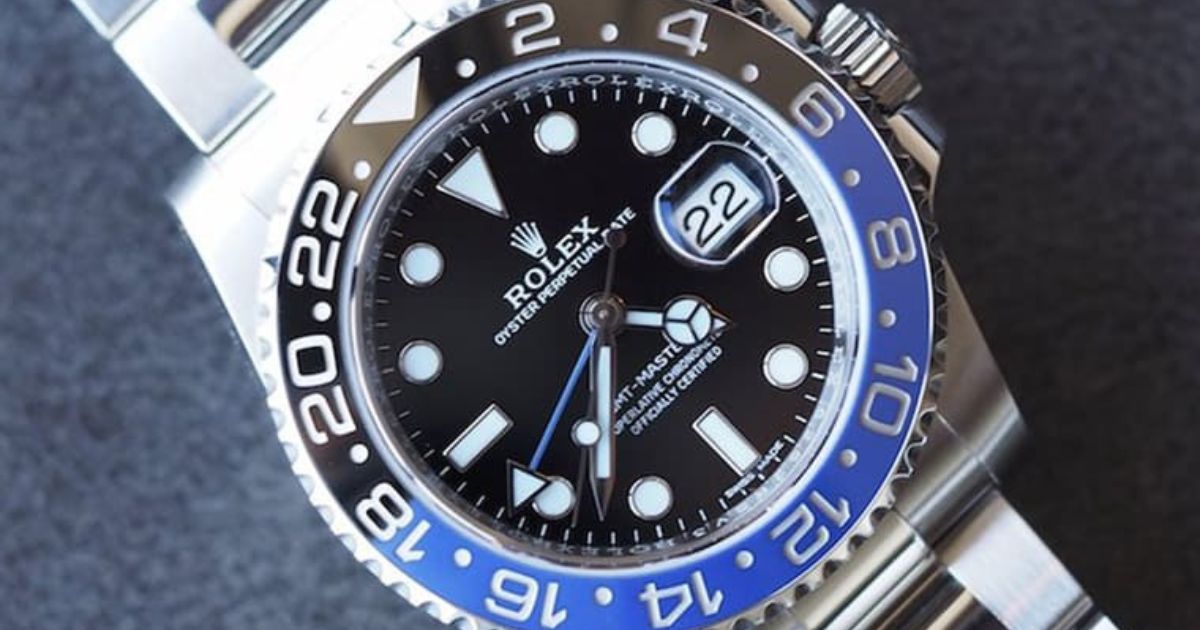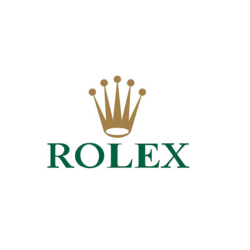Our Magazine
Spotting a Fake: 5 Tell-Tale Signs of a Counterfeit Rolex

Welcome back, horology lovers. In the world of luxury timepieces, few names command the same universal respect and recognition as Rolex. Synonymous with precision, durability, and timeless design, a genuine Rolex is a testament to decades, sometimes even a century, of relentless innovation and craftsmanship. Unfortunately, this prestige also makes it the most targeted brand by counterfeiters.
The market is flooded with fakes ranging from laughably bad “faux-lexes” to incredibly sophisticated “super fakes” that can give even seasoned collectors pause. Whether you’re considering a pre-owned purchase or simply want to validate the watch on your wrist, knowing what to look for is paramount. Today, we’re moving beyond the basics and diving into five critical areas where counterfeit Rolex watches almost always reveal their true nature.
The Magnification Cyclops: A Window to the Truth
Let’s start with one of the most iconic and easily observable features: the Cyclops lens. This small magnifying window positioned over the date is a Rolex signature. On a genuine Rolex, the Cyclops magnifies the date 2.5 times, making it appear crisp, clear, and perfectly centered within the aperture.
The Tell-Tale Signs of a Fake:
-
Weak Magnification: The most common flaw is insufficient magnification. If you have to squint or get unusually close to read the date, it’s a major red flag. A real Rolex date is boldly and legibly enlarged from a normal viewing distance.
-
Misalignment: The Cyclops should be perfectly aligned over the center of the date window. On fakes, it’s often crooked or glued on slightly off-center.
-
Poor Quality Glass: The Cyclops on a genuine Rolex is integral to the sapphire crystal and has a distinct, sharp edge. On many fakes, it’s a separate piece of plastic or glass that is glued on, often with visible residue or a “bubble” effect. On the very latest Rolex models, the Cyclops also features a subtle anti-reflective coating, which is almost never replicated well on counterfeits.
The Expert’s Eye: Tilt the watch under a light. A genuine Rolex Cyclops will present the date with stark clarity. A fake will often show a distorted, blurry, or faint date numeral.
The Movement: The Heartbeat of Authenticity
A Rolex is not just a watch; it’s a chronometer. This means its movement has undergone rigorous testing by the Swiss Official Chronometer Testing Institute (COSC) and exceeds standards of accuracy. Rolex movements are engineered, machined, and assembled to an almost absurd level of perfection. They are also almost exclusively automatic (self-winding).
The Tell-Tale Signs of a Fake:
-
The “Tick-Tock” Test: This is a classic for a reason. A genuine Rolex features a smooth, sweeping seconds hand because of its high-beat movement (28,800 beats per hour). Most fakes use a cheaper quartz movement or a low-beat automatic movement, resulting in a seconds hand that “ticks” once per second. Caveat: Some vintage Rolex Oysterquartz models are the exception, but they are rare.
-
Rotor Sound: If you can hear the rotor spinning wildly with a slight movement of your wrist, be wary. A genuine Rolex movement is impeccably lubricated and insulated. The winding is quiet and almost silent. A loud, grinding, or rattling rotor is a hallmark of a poorly made counterfeit movement.
-
The Caseback: Rolex does not produce exhibition casebacks on its classic sports and professional models (with very few, modern exceptions like some Cellini models). The caseback is almost always a solid, finely brushed metal with specific engravings. If you see a transparent caseback showing a poorly finished, plasticky-looking movement on a Submariner or Daytona, it’s definitively fake.
The Expert’s Eye: The smooth seconds hand is the easiest initial test. For a more in-depth check, a watchmaker can open the caseback (on models that allow it). The beauty and precision of a genuine Rolex Perpetual movement, with its paramagnetic blue Parachrom hairspring and Perpetual rotor, are impossible for counterfeiters to replicate.
The Weight and Feel: The Heft of Quality
A genuine Rolex is crafted from high-density, proprietary metals like 904L Oystersteel (which is more corrosion-resistant and has a finer polish than the 316L steel used by most others, including counterfeiters), 18k gold, or platinum. This, combined with the solid, milled construction, gives the watch a significant and reassuring weight.
The Tell-Tale Signs of a Fake:
-
Feels Light and Hollow: Pick up a fake Rolex, and it will often feel surprisingly light and insubstantial. Counterfeiters use cheaper, lighter alloys and often hollow out links in the bracelet to save on material costs.
-
Sharp Edges and Poor Finishing: Run your fingers along the edges of the lugs and bracelet. A genuine Rolex is meticulously finished, with every edge smoothed and beveled. A fake will often have sharp, unfinished edges that can even catch on fabric. The difference in tactile sensation is profound.
The Expert’s Eye: While difficult to quantify without experience, the heft of a real Rolex is unmistakable. It sits solidly on the wrist, feeling like a precision instrument, not a piece of costume jewelry.
The Rehaut: A Hidden Masterpiece of Engraving
The rehaut is the flange or ring between the dial and the crystal. Since the early 2000s, Rolex has introduced laser-engraved branding on the rehaut. You will find the repeated “ROLEX ROLEX” inscription, along with the model’s serial number, etched with microscopic precision.
The Tell-Tale Signs of a Fake:
-
Misaligned or Blurry Engraving: On a genuine Rolex, the word “ROLEX” is perfectly aligned with each minute marker on the dial. The engraving is crisp, deep, and sharp. On a fake, this engraving is often misaligned, shallow, blurry, or even stamped incorrectly. The coronet (Rolex crown) at the 12 o’clock position should be perfectly centered.
-
Complete Absence: On a modern Rolex that should have this feature (roughly post-2005), its complete absence is an immediate giveaway.
The Expert’s Eye: Use a loupe or the macro lens on your phone. The quality of this tiny engraving is a true test of a manufacturer’s capability. The flawless execution on a real Rolex is something counterfeiters consistently fail to achieve.
The Lume and Laser-Etched Coronet
Rolex uses its own superior luminescent material, Chromalight, which emits a long-lasting, intense blue glow in the dark. Furthermore, on all modern sapphire crystal Rolexes, there is a tiny, almost invisible laser-etched coronet at the 6 o’clock position.
The Tell-Tale Signs of a Fake:
-
Poor Lume: Fake watches often use cheap lume that is weak, unevenly applied, and glows green instead of Rolex’s signature blue. It also fades very quickly.
-
The “Blob” Crown: The laser-etched coronet on a genuine Rolex is so fine it is incredibly difficult to see with the naked eye. You’ll need a loupe and to angle the crystal just right in the light. On fakes, this coronet is often etched too deeply, is too large, or is simply a white, printed blob that is easily visible without magnification.
The Expert’s Eye: To find the genuine coronet, clean the crystal and use a loupe with a light source coming from the side. If you see a stark, white crown easily, it’s likely a fake. The real one is a security feature, not a design element.
A Final Word of Caution
The world of counterfeits is evolving, and “super fakes” are getting scarily good. They may get one or two of these details right, but they will almost always fail in multiple others. The devil is truly in the details. When in doubt, the only way to be 100% certain is to have the watch authenticated by an authorized Rolex dealer or a trusted, independent watchmaker.
Arming yourself with this knowledge is the first step in protecting your investment and ensuring the watch you cherish is a true masterpiece of horology, not a masterful deception.
What other details do you look for? Share your own spotting tips in the comments below













